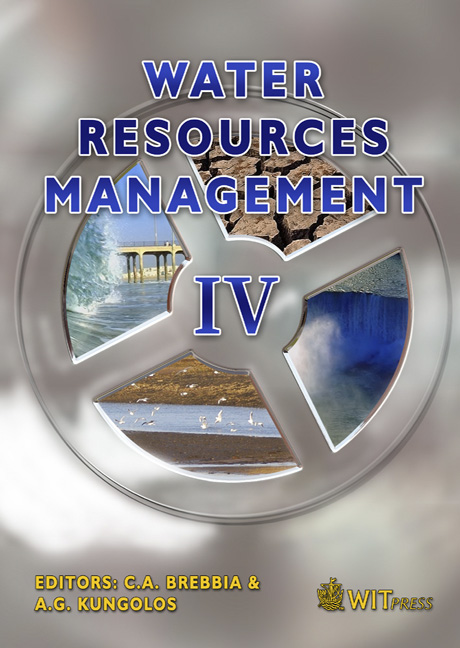Removal Of Organic Compounds From Waste Streams: A Combined Approach
Price
Free (open access)
Transaction
Volume
103
Pages
10
Published
2007
Size
408 kb
Paper DOI
10.2495/WRM070421
Copyright
WIT Press
Author(s)
J. O’Brien, T. Curtin & T. F. O’Dwyer
Abstract
A combination of factors, including costs associated with wastewater treatment and more restrictive and stringent controls on industrial effluent pollution have increased interest in water usage reduction, recycling and re-use opportunities. In this study a novel two-step approach to treatment of low concentrations of organic compounds in waste streams was investigated. Zeolite ZSM-5 was investigated with a view to examining its potential to function as both adsorbent and catalyst in the removal of aniline from aqueous solutions. The H-ZSM-5 zeolite was first loaded with copper before the aniline adsorption step. The aqueous stability of the exchanged copper on the zeolite was assessed as a function of solution pH. Minimum copper leaching was observed in the range pH 5 to pH 11 thus providing a stable working pH range for the 1.4Cu-ZSM-5 to function as an adsorbent material. Aniline adsorption was then carried out and an uptake level of 40 mg g-1 aniline on the 1.4Cu-ZSM-5 zeolite was achieved. The adsorption process followed the Langmuir model and aniline uptake was largely uninfluenced by temperature. The kinetics of the adsorption process indicated that maximum uptake of aniline occurred within thirty minutes. In the second step of the process, the aniline loaded Cu-ZSM-5 adsorbent samples were subjected to a catalytic oxidation process and mass spectroscopic analysis of the catalytic reactor exhaust gases suggested clear oxidation of the aniline to carbon dioxide, water and nitrogen, with minor amounts of nitrogen oxide gases being produced. Keywords: organics, ZSM-5, adsorption, catalytic oxidation, waste stream treatment.
Keywords
organics, ZSM-5, adsorption, catalytic oxidation, waste stream treatment.





